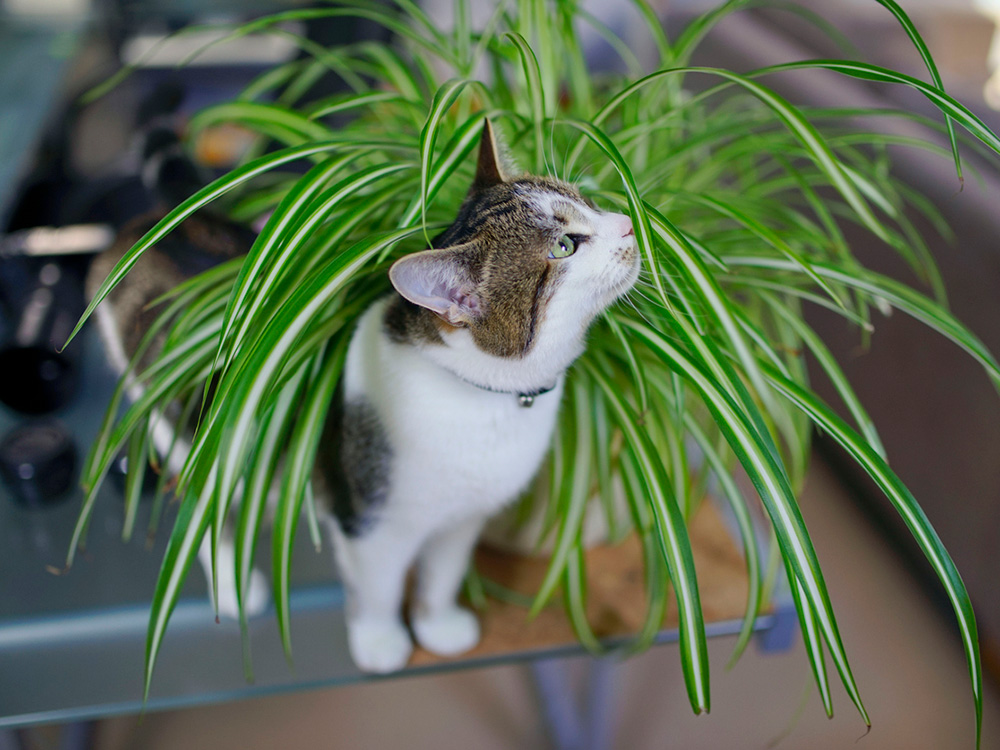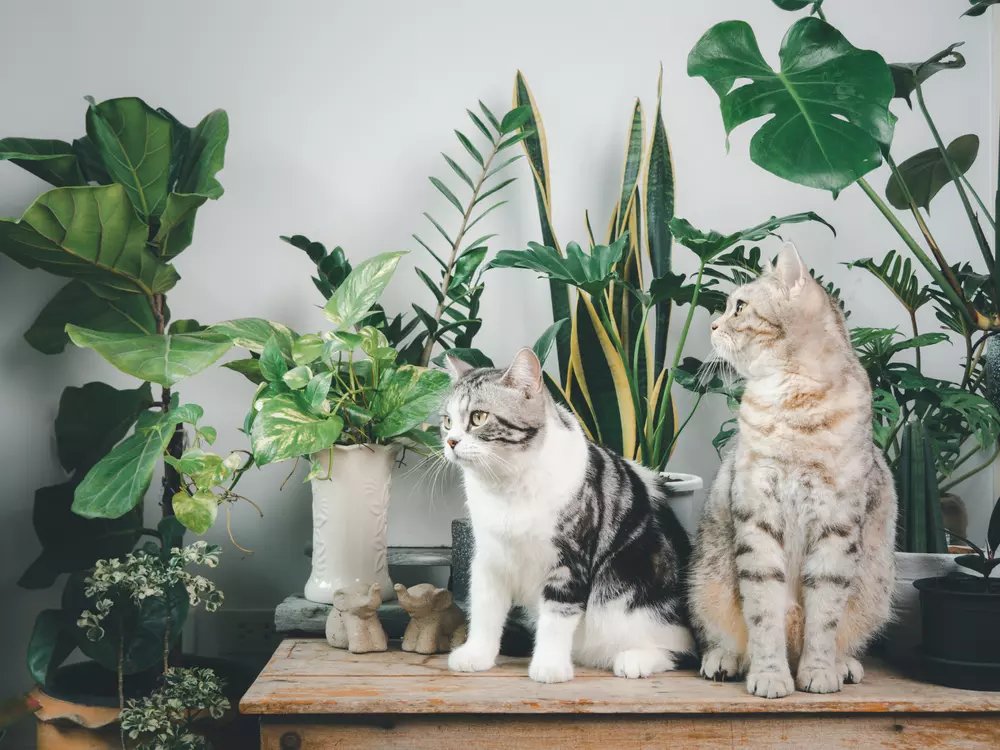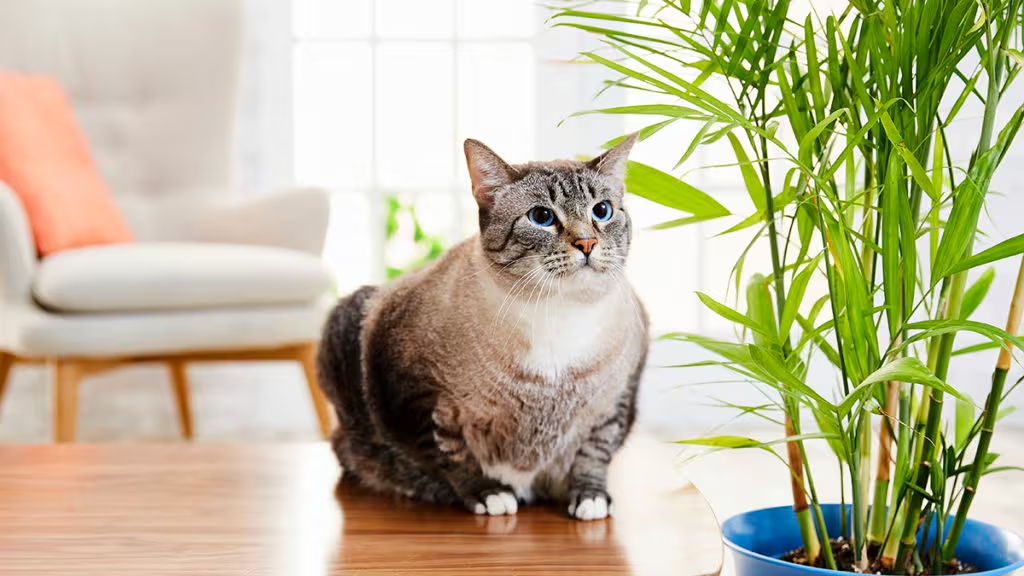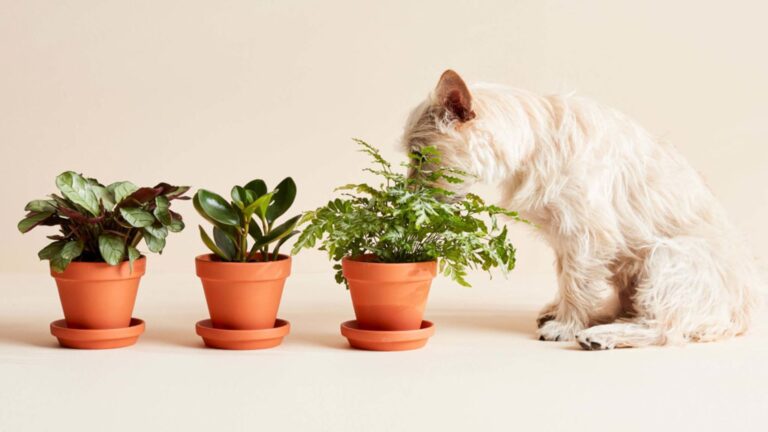Contents
Introduction
Welcome to the world of pet-friendly indoor plants, where you can add a splash of greenery to your home without worrying about your furry friends! If you’re a pet owner who loves having plants but is concerned about their safety, you’re in the right place. Choosing the right plants is crucial because some common indoor plants can be harmful if your pets decide to nibble on them. But don’t worry—there are plenty of beautiful, safe options that can thrive in your home and keep your pets happy and healthy.
Why should you be cautious about your plants? Well, many popular indoor plants can be toxic to pets like cats and dogs. When pets chew on these plants, it can lead to symptoms like vomiting, diarrhea, or even more serious health issues. That’s why it’s important to pick plants that are known to be safe for your furry companions.
In this guide, we’ll walk you through some fantastic pet-friendly indoor plants that won’t cause any harm if your pet decides to take a bite. We’ll also give you tips on how to care for these plants, so they stay lush and green. Whether you’re looking to add some greenery to your home or simply want to make sure your pets are safe, you’ll find everything you need right here. Let’s dive into the world of pet-friendly plants and discover how you can make your home both beautiful and safe for your beloved pets!
Understanding Pet-Safe Plants
When it comes to decorating your home with plants, you want to make sure that your green thumb doesn’t come with any hidden dangers for your furry friends. Let’s break down why pet safety is so important and what makes a plant truly pet-friendly.
First off, why should you care about pet safety when choosing plants? Some indoor plants can be toxic to pets like cats and dogs. Imagine your curious kitty or playful pup taking a bite out of a plant—what might seem like a harmless munch could actually lead to some pretty unpleasant side effects. Pets who chew on toxic plants might end up with stomach aches, vomiting, or diarrhea. In some cases, it could even be more serious. That’s why it’s crucial to be mindful of what plants you bring into your home.
So, what exactly makes a plant safe for pets? Pet-friendly plants are those that won’t cause harm if your pets take a little nibble. These plants tend to have non-toxic properties, meaning they don’t contain chemicals or compounds that can make your pets sick. They’re also less likely to irritate your pet’s digestive system or skin. By choosing plants with these characteristics, you’re creating a safer environment for your pets to explore and enjoy.
In the following sections, we’ll explore some of the best pet-friendly indoor plants that can brighten up your space without any worries. We’ll also dive into how to care for these plants so they stay healthy and vibrant. With a little bit of knowledge and the right choices, you can have a beautiful, plant-filled home that’s also safe for your furry friends.
Top Pet-Friendly Indoor Plants
Let’s dive into some of the best pet-friendly indoor plants that are perfect for adding a touch of nature to your home while keeping your furry friends safe. We’ve picked a range of beautiful, easy-to-care-for plants that are known to be gentle on pets, so you can enjoy the benefits of greenery without any worries.
First up is the Spider Plant (Chlorophytum comosum). This plant is a real winner for pet owners because it’s non-toxic and super easy to grow. With its long, arching leaves and small white flowers, it adds a lovely touch to any room. Plus, Spider Plants are great at purifying the air, making your home feel fresh and clean. They’re also quite resilient, which means they’re perfect if you’re new to plant care.

Next on the list is the Boston Fern (Nephrolepis exaltata). This plant is known for its lush, feathery fronds that can bring a touch of elegance to your indoor space. Boston Ferns thrive in humid environments, so they’re ideal for adding a bit of greenery to your bathroom or kitchen. They’re also completely safe for pets, making them a great choice for households with curious cats and dogs.
Another fantastic option is the Areca Palm (Dypsis lutescens). This plant features graceful, feathery leaves that create a tropical feel in your home. Areca Palms are not only pet-friendly but also excellent at purifying the air. They thrive in bright, indirect light and require regular watering, which makes them a lovely addition to any room.
Don’t overlook the Parlor Palm (Chamaedorea elegans). This charming plant has a compact size, making it perfect for smaller spaces or as a desk plant. Its elegant, arching leaves can add a touch of greenery without overwhelming your space. It’s also a great choice for pet owners since it’s safe and non-toxic to both cats and dogs.

For a splash of color, consider the African Violet (Saintpaulia). These plants are known for their vibrant, colorful blooms that can brighten up any room. They’re not just pretty—they’re also pet-friendly, so you don’t have to worry about your pet getting into trouble. African Violets thrive in moderate light and need regular watering to keep their blooms looking their best.
Last but not least, the Bamboo Palm (Chamaedorea seifrizii) is another excellent choice for a pet-friendly indoor garden. With its tall, graceful stems and lush green leaves, it can make a stunning addition to your home. Bamboo Palms are safe for pets and can help improve indoor air quality, which is an added bonus.

These pet-friendly indoor plants offer a variety of benefits and styles, so you’re sure to find one that fits your home and lifestyle. In the next sections, we’ll guide you on how to care for these plants and make sure they stay healthy and happy. Enjoy bringing a touch of nature into your home without any worries about your furry friends!
How to Care for Pet-Friendly Indoor Plants
Now that you know which pet-friendly plants to choose, let’s talk about how to keep them thriving in your home. Caring for indoor plants doesn’t have to be complicated, and with the right tips, you can ensure your greenery stays lush and beautiful while also being safe for your pets. Here’s a simple guide to help you take care of your pet-friendly plants.
Light Requirements
Every plant has its own light preferences, and getting this right is key to keeping your plants healthy. Most pet-friendly plants prefer bright, indirect light, which means they don’t need direct sunlight but still enjoy a well-lit spot. For example, Spider Plants and Boston Ferns do well in areas with filtered sunlight, while Areca Palms and Parlor Palms thrive in bright, indirect light. If you don’t have a lot of natural light, you can also use grow lights to give your plants the boost they need.
Watering and Soil Needs
Watering your plants correctly is crucial. Overwatering is a common issue that can lead to root rot, while underwatering can leave your plants dry and stressed. A good rule of thumb is to check the top inch of soil—if it feels dry, it’s time to water. Spider Plants and Boston Ferns like their soil to stay consistently moist, but not soggy. Areca Palms and Parlor Palms prefer their soil to dry out a bit between waterings. Always use a pot with drainage holes to prevent excess water from sitting at the bottom.
Choosing the right soil is also important. Most pet-friendly plants do well in a standard potting mix. For plants that like more moisture, you might choose a mix that includes peat moss or vermiculite to help retain water. Be sure to repot your plants every couple of years to refresh the soil and give the roots more room to grow.
Potting and Repotting
Selecting the right pot is another key aspect of plant care. Choose a pot that’s slightly larger than the plant’s root ball to allow for growth. If your plant becomes root-bound, meaning its roots are growing out of the bottom of the pot or circling around inside, it’s time to repot. Repotting helps your plant get fresh soil and more space to grow, which keeps it healthy and vibrant. Generally, repotting should be done every 1-2 years or when you notice your plant outgrowing its current pot.
With these simple tips, you can keep your pet-friendly plants thriving and ensure they add beauty to your home without causing any trouble for your furry friends. In the next section, we’ll explore how to create a pet-friendly environment in your home and share additional tips for maintaining a safe and enjoyable space for both your plants and pets.
Tips for Maintaining a Pet-Friendly Home
Creating a home that’s both beautiful and safe for your pets can be a balancing act, but with a few thoughtful strategies, you can achieve both. Here are some practical tips for maintaining a pet-friendly environment while enjoying your indoor plants.
Plant Placement
Where you place your plants can make a big difference in keeping your pets safe. It’s a good idea to put plants in spots that are less accessible to curious paws and noses. For instance, hanging plants from the ceiling or placing them on high shelves can keep them out of reach. If you’re using plant stands, make sure they’re sturdy enough to avoid tipping over if your pet decides to investigate.
If you’re concerned about your pet getting too close to your plants, consider using deterrents like citrus-scented sprays, which can help keep pets at bay. Some people also use physical barriers, like decorative fencing or plant cages, to protect their greenery while still allowing it to thrive.
Creating a Pet-Friendly Environment
A pet-friendly environment goes beyond just plant placement. Make sure your home has plenty of pet-friendly entertainment and safe spaces. Providing your pets with toys, scratching posts, and comfy spots to rest can help keep them occupied and less likely to bother your plants.
Training your pets to avoid plants can also be effective. Simple commands like “leave it” can help deter pets from munching on your indoor greenery. Consistent training and positive reinforcement can go a long way in helping your pets understand which areas are off-limits.
Identifying and Handling Potential Issues
Even with the best precautions, it’s important to be prepared for potential issues. Keep an eye out for any signs that your pet might have ingested something they shouldn’t have, such as vomiting, diarrhea, or unusual behavior. If you suspect your pet has eaten a plant, it’s always a good idea to contact your vet or a pet poison control hotline for advice.
Having a plan in place can help you respond quickly if a problem arises. Make sure you know the symptoms of plant toxicity and have the contact information for your vet and poison control handy.
By following these tips, you can enjoy a vibrant, plant-filled home without compromising your pets’ safety. With thoughtful plant placement, plenty of pet-friendly distractions, and a proactive approach to potential issues, you can create a harmonious space where both your plants and pets can thrive. In the next section, we’ll wrap up with a summary of key points and encourage you to embrace the joys of a pet-safe indoor garden.
Conclusion
As we wrap up our guide to pet-friendly indoor plants, let’s take a moment to recap the key points and reinforce why choosing the right plants is so important. By selecting plants that are safe for your furry friends, you can create a beautiful, vibrant home environment without any worries about your pets’ health.
We’ve explored a variety of pet-friendly plants that are not only safe but also add charm and freshness to your space. From the graceful Spider Plant and lush Boston Fern to the colorful African Violet and the elegant Areca Palm, there are plenty of options to suit any style and space. Each of these plants offers unique benefits, such as air purification and aesthetic appeal, making them perfect companions for your home.
Caring for these plants involves understanding their light and water needs, choosing the right soil, and repotting when necessary. By following simple care tips, you can keep your plants healthy and thriving, adding to the overall enjoyment of your living space.
Maintaining a pet-friendly home is about more than just selecting the right plants; it’s also about creating an environment that supports both your pets and your plants. Proper plant placement, providing alternative entertainment for your pets, and being prepared for any potential issues all contribute to a harmonious home.
Remember, a little bit of planning and care can go a long way in ensuring that your home is both beautiful and safe for your furry companions. Embrace the joys of having indoor plants while keeping your pets happy and healthy. Your home can be a haven of greenery and warmth, with plants that bring life and beauty without compromising your pets’ well-being.
Thank you for joining us on this journey to making your indoor garden a safe and delightful space. Happy planting!



